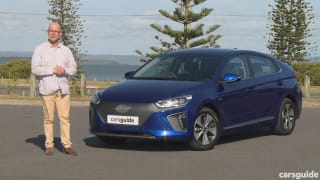What’s compression ignition again? It’s basically how a diesel engine works, by using extreme pressure instead of spark plugs to burn fuel. Skyactiv-X still uses spark plugs, but only to kick off the ignition process and act as a safety net for cold starts and other edge cases, while extreme compression makes for much more effective combustion, which means improved efficiency.
This combustion efficiency means the engine can use a much leaner fuel-to-air mixture, and make more power and torque with less fuel and even less wasted fuel out the exhaust. Mazda describes it as delivering diesel-like torque and fuel consumption, with the power, responsiveness and refinement of a petrol. Or in other words, one step away from turning water into wine...
Mazda is calling the process Spark Controlled Compression Ignition (SPCCI), and the extreme pressures required to make it all happen are created by higher static compression ratio (but less than a typical diesel), much higher fuel pressure and boosted air pressure entering the combustion chamber.
Key to managing all these heightened parameters (and the very technological advancement that makes it all possible) is an ultra sensitive in-cylinder pressure sensor that has been developed specifically for this task.

Delivering the boosted air pressure is a Roots-type supercharger - or what Mazda describes as a high-response air supply - which was chosen over other air pump designs like a turbocharger or the Miller-cycle supercharger previously used in Eunos models because of its instantaneous boost delivery and breadth of efficiency.
Speaking of breadth of efficiency, perhaps the biggest plus for average motorists is that the engine’s efficiency zone has multiplied, meaning the difference between city and highway consumption, leadfoot drivers and my Dad, heavy and empty loads etc will be far less than a typical petrol engine.
This all represents a continuation of core principles we’ve seen from the start of Mazda’s Skyactiv era. That is, to make an existing engine type work better under everyday driving conditions rather than targeting outright performance.
The Skyactiv-X era starts with a 2.0-litre based on the regular Skyactiv-G engine, with the same 1998cc capacity. Other capacities are planned, with the eventual reborn rotary looking increasingly Skyactiv-X along with a straight-six version for a new CX-9 in a couple of years. Smaller versions are unlikely due to the economies of scale involved with such technology in a smaller and therefore cheaper car.
Mazda is making two versions of the Skyactiv-X 2.0-litre for now, one with 16.3:1 compression designed for Europe that favours Premium unleaded petrol, and one 15:1 version aimed at the US with their abundance of lower grade unleaded.
Unlike conventional engines, it’s the lower compression version that will deliver the biggest benefits, because Skyactiv-X relies on the usually “bad thing” pinging to do its best.
We’re set to get the Euro-spec one in Australia, which unfortunately means we won’t quite be getting the very best Skyactiv tech again.
The Euro-spec engine puts out 132kW at 6000rpm and 224Nm from just 3000rpm, which on paper sounds about halfway between the existing Skyactiv-G 114kW/200Nm 2.0-litre and 139kW/252Nm 2.5-litre petrol engines.

The engine also incorporates a mild hybrid system, but don't be confused by the H-word, there's no electric drive element. It simply means its got a cleaver alternator that only engages when needed and on deceleration to reduce efficiency-sapping drivetrain friction,
Pop the bonnet and you’re confronted by the biggest engine cover you’ve ever seen, but unlike most, this one is equipped with labeled latches that encourage you to have a look underneath. This encouragement continues with a clever little retention hook to hold the cover up against the bonnet while you’re poking around.
Unless you’re a Mazda engineer you’re likely to be baffled by the array of hoses, ducts and wiring, but you might get a kick out of spotting the supercharger.
There’s less to be said for the transmissions though, with versions of the existing six speed manual and torque converter automatics deemed up to the task, with the new engine’s increased efficiency zone negating any increase to the ratio count. The ratios have been adjusted to suit the new output characteristics, and while the ratios are yet to be published, there’s a narrower spread across the six with what feels to be taller first and sixth gears.



















